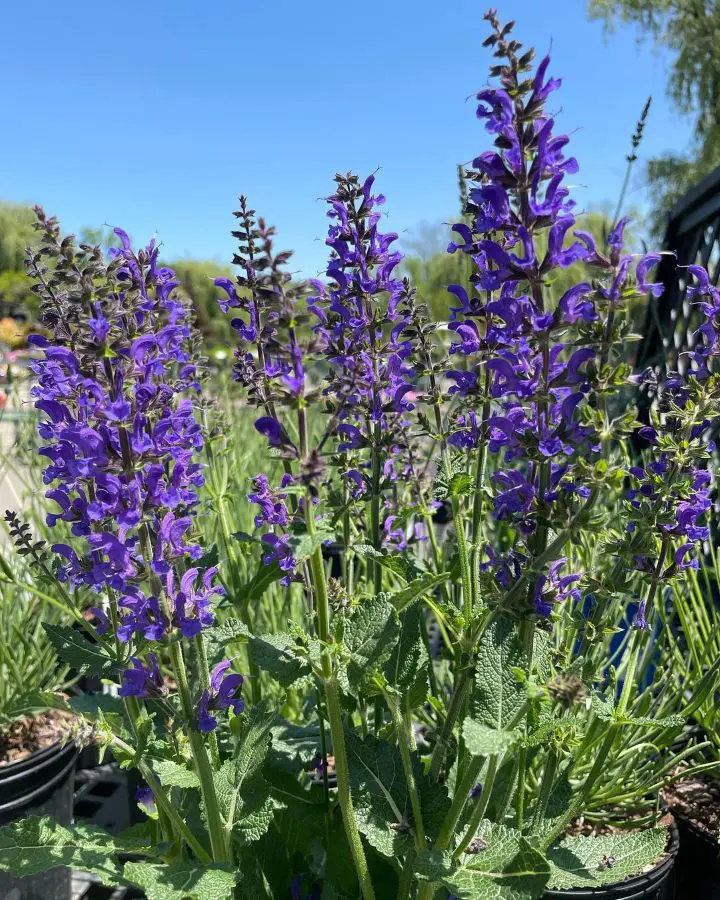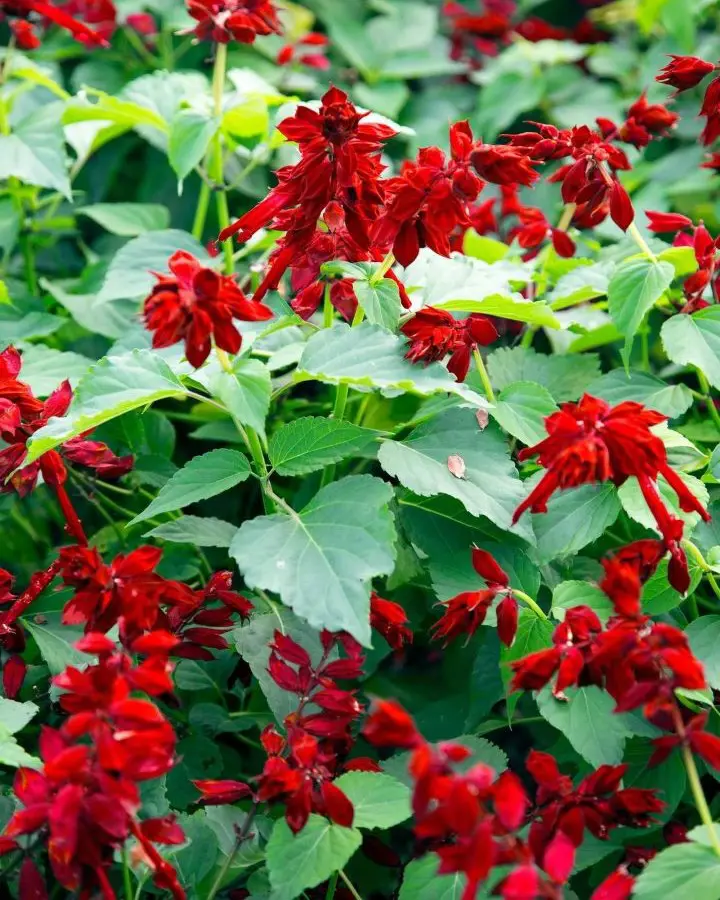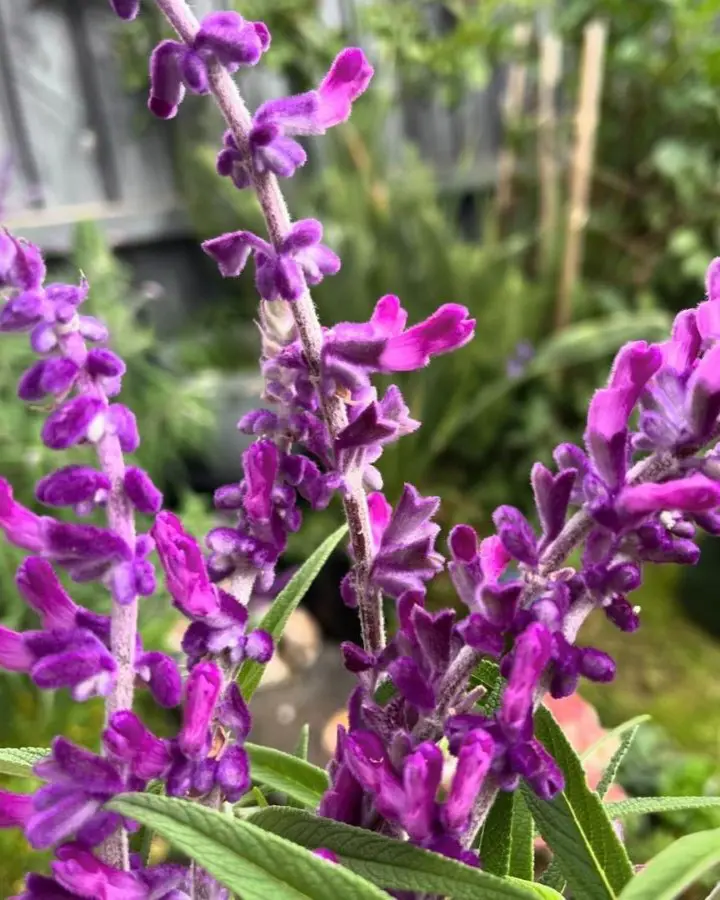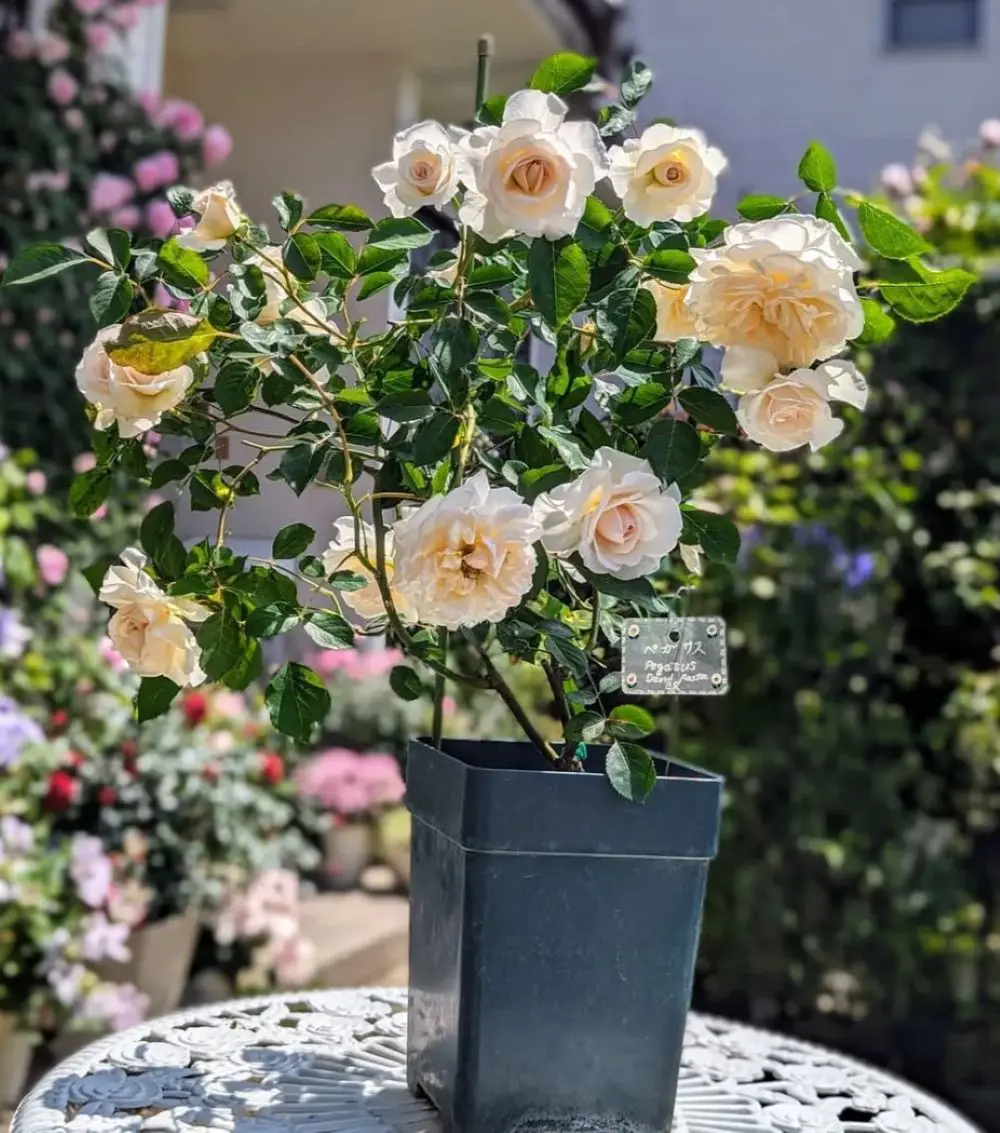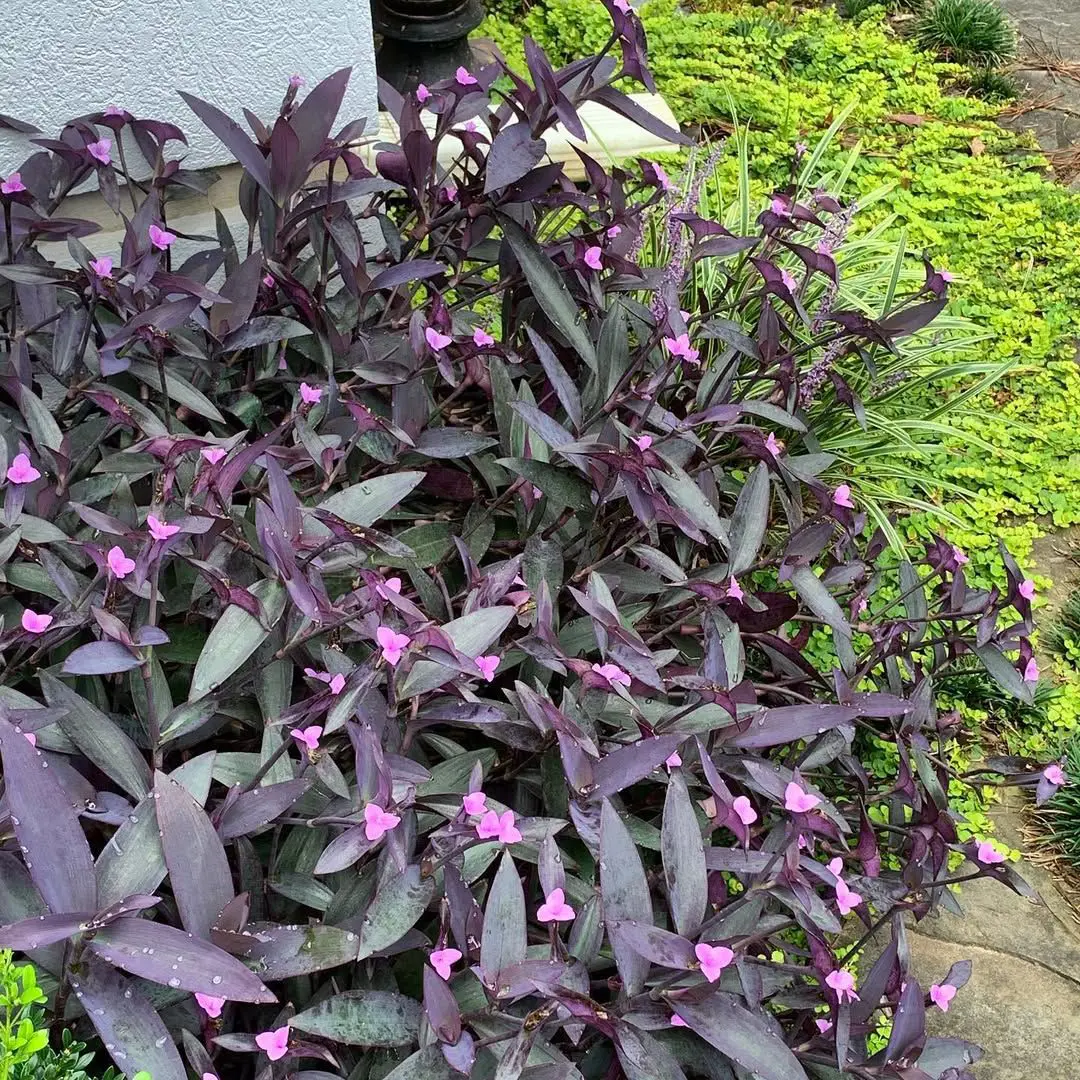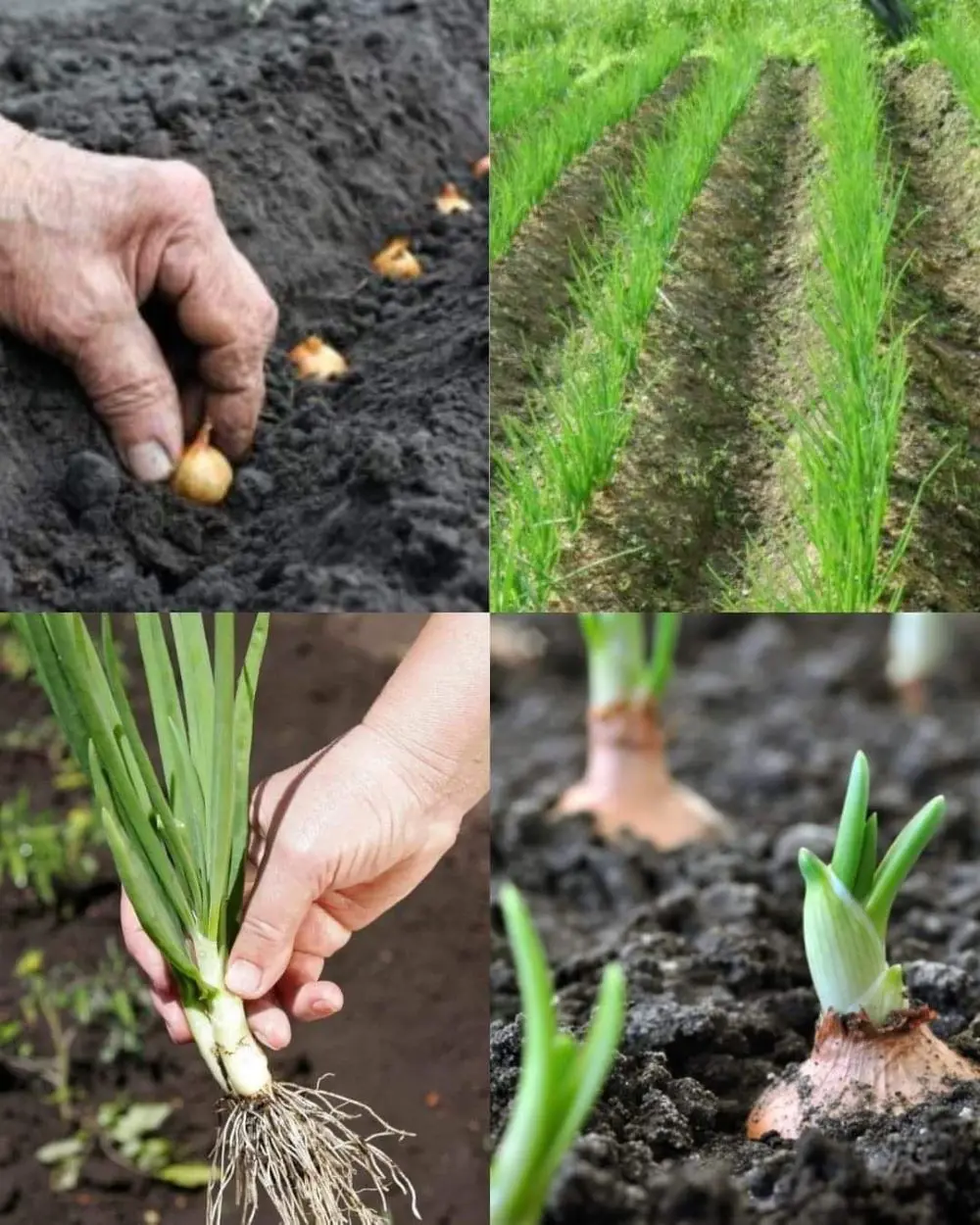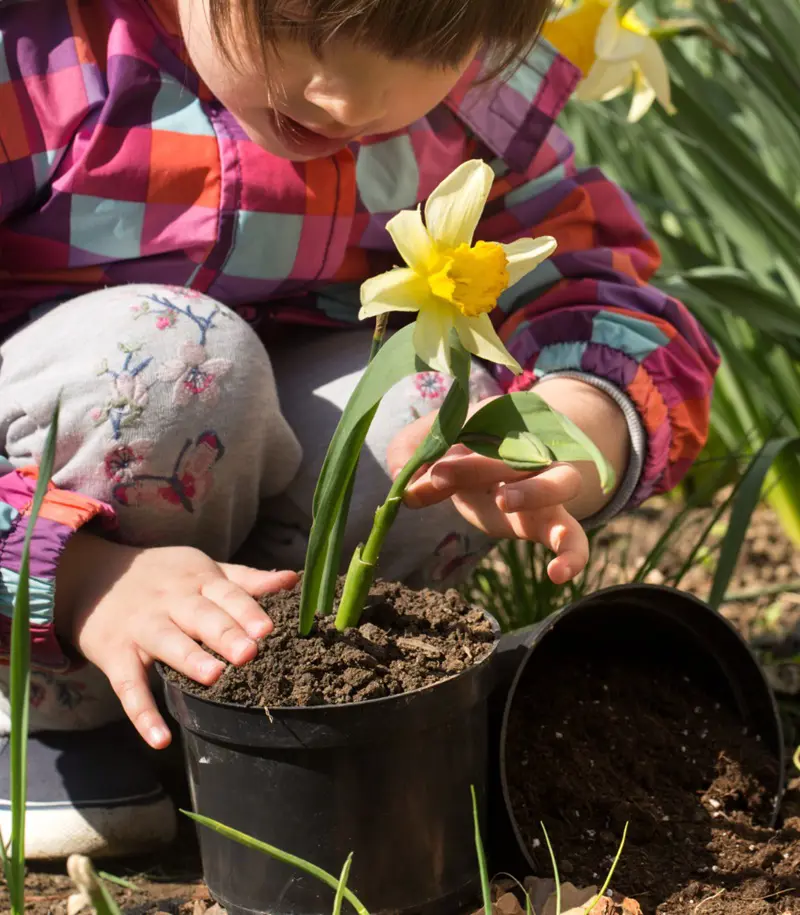If your little salvia seeds have reached an adequate size, you can successfully multiply your plants through propagation. You should do that every 3 to 4 years. It is relatively easy and can be done by taking tip cuttings, side shoots, division and layering.
Cutting
Spring and early summer are the best times for tips cutting. You begin by locating an ideal stem for a cutting. An ideal stem has one bud at the top of the stem and two leaf nodes. Once you have found the salvia stem tip, cut through or just below the bottom node located on the buds.
Take the cuttings and put them in water while you finish preparing all the other cuttings and before planting them, dip them in cutting gel/ powder that helps them grow roots faster.
Side Shoots
You can also propagate from small side shoots from the base of the plant. This works for bushy, herbaceous (soft-stemmed), and tall shrubby salvias. The best way is to take the cutting with a heal. Do this by gently breaking the shoot off the main stem so a small chunk of the main stem stays attached to the shoot.
Divison
Division is ideal for herbaceous salvias that form clumps on the base or plants that increase their size from underground stems. Do it after winter has passed and the danger of frost is gone, when you see new shoots appearing.
Begin by gently digging up the clump or tapping it out of its pot. Use a sharp knife or spade to slice the clumps in half or quarters, depending on size. Ensure each divided section has enough shoots and roots to thrive and a good amount of new growth.
Remove dead or damaged stems, shoots, and roots from the divided plant. Next, apply a rooting powder to the cut area and place it in its new position or pot. Fill the pot with soil, and firmly tamp down to secure the roots. This should result in 2-4 healthy new plants.
Layering
Layering is a simple and effective method for propagating salvias that spread along the ground or produce long, trailing stems that can be carefully bent down to the ground.
Some gardeners prefer to lightly wound or nick the stem, which can stimulate root growth. Others may cover a section of stem with soil or mulch, allowing it to develop roots.
Another method is to bury the nodes or "elbows" of the stem, where they naturally produce roots when they come into contact with the ground. This approach allows the plant to take root without further intervention."
When the stem is well rooted, it can be cut and potted up or planted in the garden.
